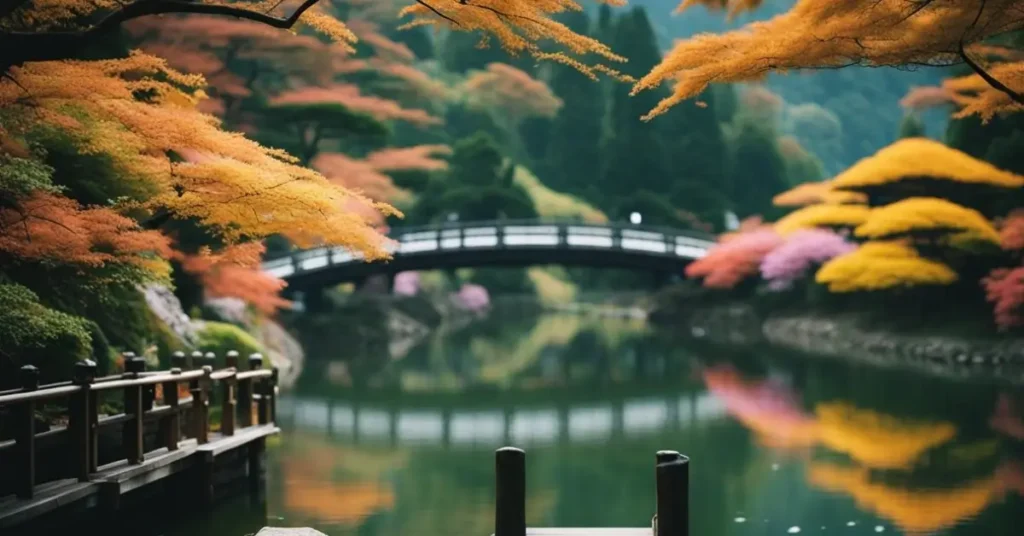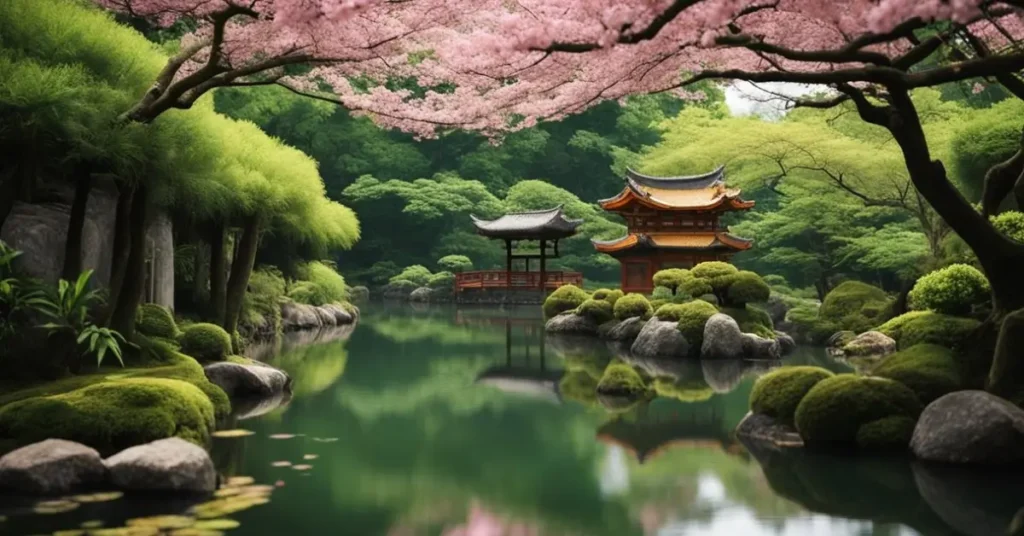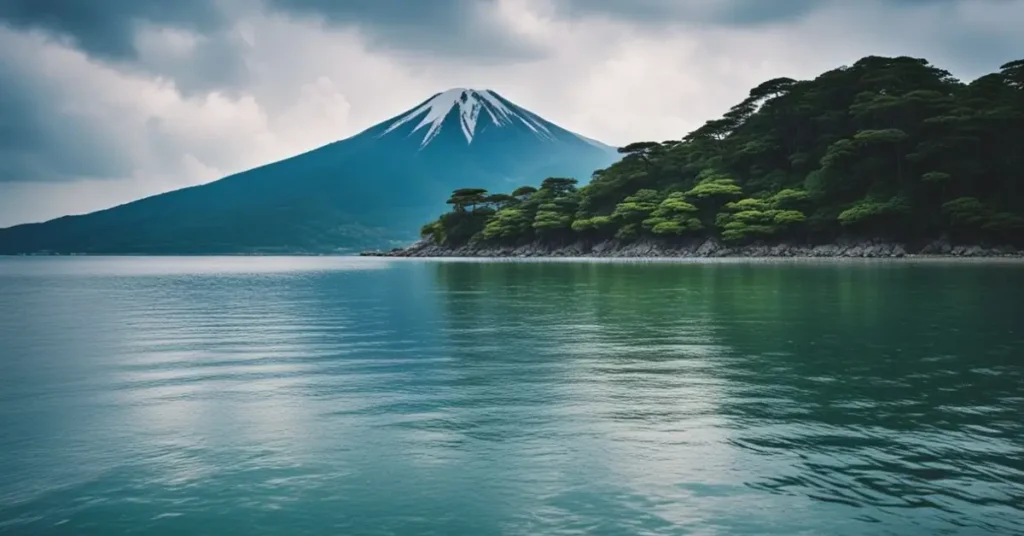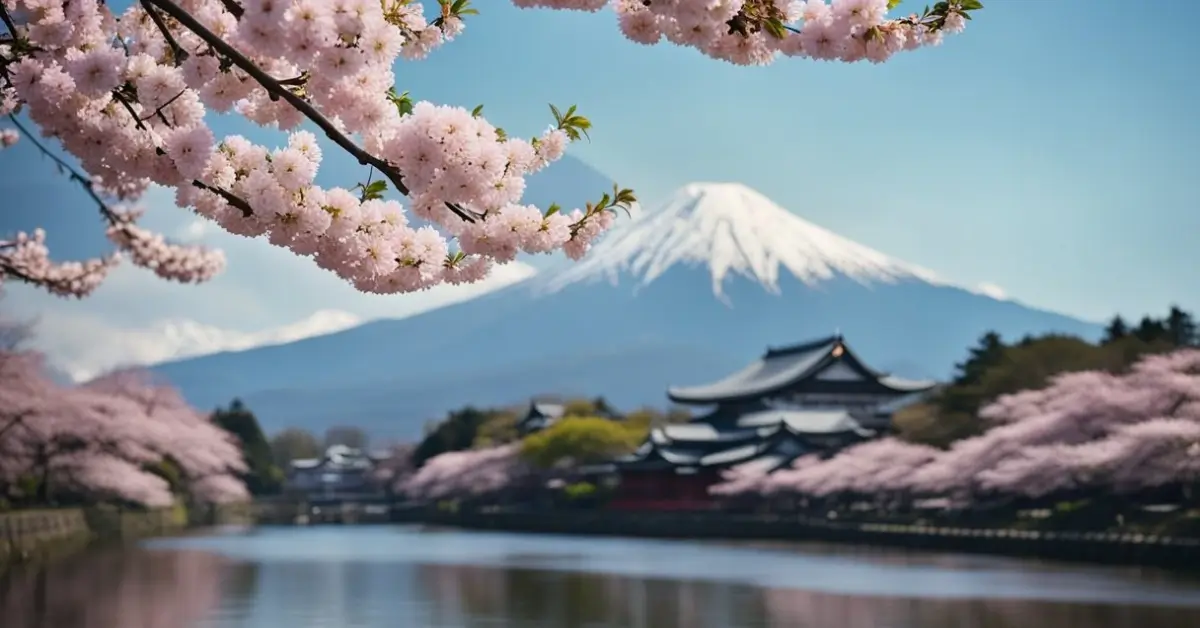If you’re a nature lover, Japan is a must-visit destination. The country is home to a diverse range of natural wonders, from stunning mountain ranges to lush forests and pristine beaches. In this article, we’ll explore the many facets of the Nature of Japan, highlighting some of the most beautiful and awe-inspiring places to visit.
Japan is an island nation in East Asia, made up of nearly 7,000 islands. The country’s varied topography is a result of its location at the intersection of several tectonic plates, which has resulted in a landscape that is both rugged and beautiful. From the snow-capped peaks of the Japanese Alps to the subtropical beaches of Okinawa, there is no shortage of natural beauty to be found in Japan.
Whether you’re interested in hiking, skiing, surfing, or simply soaking up the scenery, Japan has something to offer. In the following sections, we’ll take a closer look at some of the most spectacular natural wonders in Japan, from the enchanted greens of Yakushima to the highland river valley of Kamikōchi. So, pack your bags and get ready to explore the Nature of Japan with us!
Geographical Overview of Japan
Japan is an archipelago made up of four main islands: Honshu, Hokkaido, Kyushu, and Shikoku. The country is located in the Pacific Ocean and is surrounded by the Sea of Japan to the west and the East China Sea to the south. Japan is known for its unique topography, which includes mountains, forests, rivers, lakes, coastlines, and islands.
Mountains and Forests
Japan is a mountainous country, with over 73% of its land covered by mountains. The Japanese Alps, located in central Honshu, are a popular destination for hikers and skiers. The highest peak in Japan is Mount Fuji, which stands at 3,776 meters (12,388 feet) tall. Japan’s forests cover 67% of the country’s land area, making it one of the most forested countries in the world. The forests are home to a variety of wildlife, including monkeys, deer, and bears.
Rivers and Lakes
Japan has many rivers and lakes, which provide important resources for the country. The longest river in Japan is the Shinano River, which flows for 367 kilometers (228 miles) through central Honshu. The largest lake in Japan is Lake Biwa, which is located in Shiga Prefecture and has a surface area of 670 square kilometers (259 square miles). Many of Japan’s rivers and lakes are used for hydroelectric power, fishing, and transportation.
Coastlines and Islands
Japan has a long coastline that stretches for over 29,000 kilometers (18,000 miles). The country is made up of over 6,800 islands, including the four main islands and many smaller islands. Some of the most famous islands in Japan include Okinawa, Hokkaido, and Shikoku. Japan’s coastlines and islands are home to a variety of marine life, including whales, dolphins, and sea turtles.
Flora and Fauna of Japan
Japan is home to a diverse range of flora and fauna due to its unique geography and climate. In fact, Japan has over 90,000 species of wildlife, including many endemic species that can only be found in Japan. In this section, we will explore some of the most interesting and unique flora and fauna that can be found in Japan.
Endemic Species
Japan has a rich diversity of flora, with approximately 5,600 vascular plant species, and almost 40% of them are endemic. One of the most famous examples of an endemic species in Japan is the sakura (cherry blossom) tree, which is beloved by the Japanese people and is a symbol of the country. Other notable endemic species include the Japanese cedar, the Japanese cypress, and the Japanese black pine.
In addition to its unique flora, Japan is also home to many endemic species of fauna. Some of the most well-known of these include the Japanese macaque (also known as the snow monkey), the Japanese raccoon dog, and the Japanese giant salamander, which is the largest amphibian in the world.
National Parks and Wildlife

To protect its precious flora and fauna, Japan has established a large network of national parks and wildlife reserves. These parks are home to many of Japan’s endemic and endangered plants and animals, and some have become Special Natural Monuments of Japan. There are 34 national parks in Japan, covering a total area of over 20,000 square kilometers.
One of the most famous of these parks is the Fuji-Hakone-Izu National Park, which is home to Mount Fuji, the highest mountain in Japan, and the Hakone hot springs. Other notable parks include the Nikko National Park, which is home to the Toshogu Shrine and the Kegon Falls, and the Shiretoko National Park, which is located on the Shiretoko Peninsula in Hokkaido and is famous for its brown bears and hot springs.
Climate and Weather Patterns
As we explore the nature of Japan, it is important to understand the climate and weather patterns that shape this beautiful country. Japan’s climate varies widely depending on the region, with four distinct seasons experienced throughout most parts of the country.
Seasonal Changes
Spring is a magical time in Japan, with cherry blossoms blooming and the country coming alive with festivals and celebrations. Summer can be hot and humid, with temperatures ranging from 22°C (71°F) in Hokkaido to 28°C (82°F) in Tokyo and other major cities. Autumn brings cooler weather and stunning fall foliage, while winter can be quite cold, especially in the northern regions.
Natural Disasters
Japan is known for its natural disasters, including earthquakes, typhoons, and tsunamis. It is important to be aware of the potential risks and take appropriate precautions when visiting this country. Typhoons can hit Japan from June to October, bringing strong winds and heavy rain. Earthquakes are also common, with several occurring each year. Tsunamis can follow earthquakes, so it is important to pay attention to warnings and evacuation orders.
Despite these potential risks, Japan’s natural beauty and unique climate make it a fascinating destination for travelers. Whether you are exploring the bustling cities or the serene countryside, there is always something new to discover in this amazing country.
Cultural Influence on Nature of Japan
Japan is a country that is deeply rooted in its culture and traditions. This is particularly evident in the way that nature is viewed and appreciated in Japan. In this section, we will explore the cultural influences that have shaped the way that nature is perceived in Japan.
Gardens and Aesthetics
One of the most significant cultural influences on nature in Japan is the concept of gardens and aesthetics. Gardens in Japan are not just a collection of plants and flowers, but rather a carefully crafted work of art. The Japanese garden is designed to create a sense of harmony and balance between nature and human beings. This is achieved through the use of various elements such as rocks, water, and plants, which are arranged in a way that creates a sense of tranquility and peace.
The aesthetic principles that are applied to Japanese gardens have also influenced other areas of Japanese culture. For example, the principles of simplicity, asymmetry, and naturalness that are used in garden design are also applied to other forms of art such as pottery, calligraphy, and painting.
Nature in Art and Literature
Nature has always been a significant source of inspiration for Japanese artists and writers. This is evident in the many paintings, poems, and stories that have been created over the centuries that celebrate the beauty of nature. One of the most famous examples of this is the haiku, a form of poetry that originated in Japan.
Haiku poems are typically made up of three lines and focus on capturing a moment in nature. The simplicity and elegance of haiku poetry have made it one of the most beloved forms of poetry in Japan and around the world.
The influence of nature is also evident in Japanese art. Traditional Japanese paintings often depict scenes from nature, such as mountains, rivers, and forests. The use of natural materials such as bamboo, wood, and paper in art and craft is also a reflection of the importance of nature in Japanese culture.
Environmental Issues and Conservation

As we explore the nature of Japan, we cannot ignore the environmental issues that the country faces. Japan has a high population density and a highly developed economy, which leads to several environmental concerns. However, the country has also taken significant conservation efforts to preserve its natural resources.
Pollution and Climate Change
Japan faces several pollution problems, including air pollution, water pollution, and waste management. The country is the world’s second-highest generator of waste, and managing waste is a significant challenge due to its dense population and high level of development. Air pollution is also a concern, with several cities experiencing high levels of particulate matter and nitrogen dioxide.
Climate change is another pressing issue in Japan. The country is vulnerable to rising sea levels, typhoons, and extreme weather events. Japan’s original commitment to reduce emissions by 26% by 2030 was seen as unambitious, but the country has since committed to a 46-50% reduction. However, this target still lags behind the goals of the world’s most ambitious actors.
Conservation Efforts
Despite the environmental challenges, Japan has taken significant conservation efforts to preserve its natural resources. The country is one of the world’s 36 biodiversity hotspots, with a unique range of biodiversity supported by its broad range of climates. Japan has established several national parks and protected areas to preserve its natural beauty, such as the UNESCO World Heritage sites of Yakushima Island and Shirakami-Sanchi.
Japan is also at the forefront of global efforts to create a sustainable society. The country is working towards realizing a green society, protecting oceans from plastic waste, and creating a circular economy. Japan shares its expertise and lessons learned with its partners around the world, making significant contributions to global conservation efforts.
In conclusion, while Japan faces several environmental challenges, the country has also taken significant conservation efforts to preserve its natural resources. As we continue to explore the nature of Japan, it is essential to acknowledge these challenges and efforts and work towards creating a sustainable future.
Our Thoughts On The Nature Of Japan

When we think of the nature of Japan, one of the first things that comes to mind is its stunning beauty. From the iconic cherry blossom trees to the majestic Mount Fuji, Japan’s nature is truly awe-inspiring. But it’s not just the big landmarks that make Japan’s nature so special. It’s the attention to detail and appreciation for the small things that really sets it apart.
Japanese culture places a strong emphasis on harmony with nature, and this is reflected in everything from traditional architecture to the art of flower arrangement. Even in the bustling cities, you’ll find carefully tended gardens and parks where people can take a moment to escape the hustle and bustle and connect with nature.
One of the things that we find most striking about Japan’s nature is how it changes with the seasons. In the spring, the cherry blossoms burst into bloom, creating a sea of pink and white that is truly breathtaking. In the fall, the leaves turn vibrant shades of red and orange, and people flock to the parks to enjoy the autumn foliage.
Of course, Japan’s nature isn’t just about the pretty sights. It’s also home to a wide variety of flora and fauna, from the iconic snow monkeys of Nagano to the endangered sea turtles of Okinawa. And let’s not forget about the delicious food that comes from Japan’s natural bounty, from fresh seafood to mouth-watering fruits and vegetables.
Overall, we believe that Japan’s nature is something truly special. It’s a testament to the country’s deep connection with the natural world, and a reminder that even in the midst of modernity, we can still find beauty and tranquility in the world around us.
FAQ – Nature Of Japan
What is nature like in Japan?
Japan’s nature is a harmonious blend of ancient forests, majestic mountains, and serene coastlines, encapsulating the serene Nature of Japan. The Nature of Japan is characterized by its four distinct seasons, each painting the landscape with a unique palette of colors and textures.
In spring, the Nature of Japan is adorned with the delicate pink of cherry blossoms, while autumn brings a fiery display of foliage, showcasing the transformative Nature of Japan.
With its alpine regions offering winter sports and its subtropical areas boasting coral reefs, the Nature of Japan is both diverse and enchanting, inviting exploration and reflection at every turn.
What are the natural characteristics of Japan?
Japan’s natural characteristics are as diverse as they are breathtaking, embodying the very essence of the Nature of Japan. From the northern reaches of Hokkaido with its untamed wilderness and cold climate, to the subtropical islands of Okinawa in the south, the Nature of Japan offers a rich tapestry of landscapes.
The country is renowned for its four distinct seasons, each bringing its own unique beauty and contributing to the Nature of Japan. The cherry blossoms of spring, the lush greenery of summer, the vibrant foliage of autumn, and the pristine snowscapes of winter all play a part in the dynamic Nature of Japan.
With numerous natural hot springs, volcanic mountains, and coastal vistas, the Nature of Japan provides endless opportunities for exploration and appreciation.
What are the natural characteristics of Japan?
Japan’s natural characteristics are defined by its rugged coastlines, volcanic landscapes, and diverse ecosystems, all of which are emblematic of the Nature of Japan.
The Nature of Japan is also marked by its numerous hot springs and the iconic Mount Fuji, reflecting the country’s volcanic activity. Additionally, the Nature of Japan includes its rich biodiversity, with lush forests and varied wildlife, which are deeply integrated into the nation’s culture and traditions, further highlighting the unique Nature of Japan.
What are your thoughts on the Nature of Japan? Let us know in the comments!


